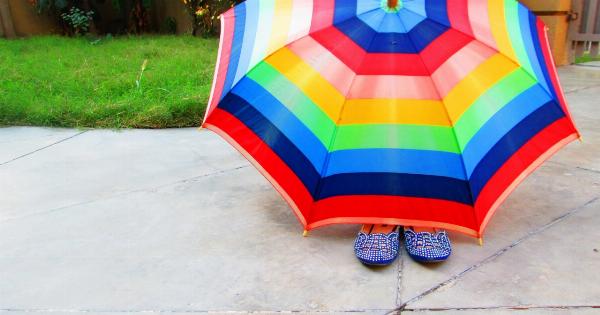Skin cancer is a growing concern all around the world. It is the most common cancer in the United States. One in five Americans will develop it in their lifetime, according to the Skin Cancer Foundation.
The good news is that most skin cancers can be prevented by taking proper precautions and following a few simple steps. Here are essential steps to protect your skin from cancer:.
1. Use Sunscreen Regularly and Correctly
Sunscreen is widely available, but many people either do not use it or use it incorrectly. To protect yourself from skin cancer, you should use a broad-spectrum sunscreen with an SPF of 30 or higher.
Apply sunscreen 15 minutes before going outside, and reapply it every two hours, or after swimming or sweating. Be sure to cover all exposed skin, including your ears, neck, and hands. Don’t forget to apply it on cloudy days too, since harmful UV rays can penetrate clouds.
2. Seek Shade during Peak Sun Hours
The sun’s rays are the strongest between 10 a.m. and 4 p.m., so try to stay in the shade during those hours. Seek shade under an umbrella, tree, or building.
If you must be outside, wear a wide-brimmed hat and long-sleeved clothing to protect your skin from the sun’s UV rays.
3. Wear Sunglasses that Block UV Rays
Protect your eyes from the harmful effects of the sun’s UV rays by wearing sunglasses that block UV rays. Look for sunglasses that block 99% or 100% of UVA and UVB rays.
Wearing a hat in addition to sunglasses can also provide extra protection for your eyes and skin.
4. Avoid Tanning Beds
Tanning beds emit harmful UV rays that can cause skin cancer. Avoid tanning beds altogether, and opt for self-tanning products like lotions or spray tans, or simply embrace your natural skin color.
If you want a sun-kissed glow, use a self-tanner that contains dihydroxyacetone (DHA), a colorless sugar that reacts with the amino acids on the surface of your skin to produce a tan.
5. Get Regular Skin Cancer Screenings
Regular skin cancer screenings can help detect skin cancer early when it is most treatable. Check your skin regularly for any changes in moles, birthmarks, or freckles.
See a dermatologist for a professional skin cancer screening at least once a year if you have a higher risk of skin cancer or have a personal or family history of skin cancer.
6. Protect Your Lips
Your lips are also vulnerable to the sun’s harmful UV rays. Use a lip balm with an SPF of 30 or higher to protect your lips from sun damage. Reapply as needed, especially after eating or drinking.
7. Stay Hydrated
Drinking plenty of water can help keep your skin healthy and hydrated, making it less prone to damage from the sun’s UV rays.
Aim to drink at least eight glasses of water a day, and more if you are sweating or outdoors for an extended period of time.
8. Be Aware of the Risks of Skin Cancer
It is important to be aware of the risks of skin cancer and know your risk factors. Fair-skinned individuals, people with a history of sunburns, and those who spend a lot of time outdoors are at higher risk of developing skin cancer.
People with numerous moles or a family history of skin cancer are also at higher risk. Protecting your skin from the sun’s harmful UV rays is essential in reducing your risk of skin cancer.
9. Use Protective Clothing
Wearing protective clothing can help shield your skin from the sun’s harmful UV rays. Look for clothing with a UPF (ultraviolet protection factor) rating. The higher the UPF rating, the better protection the clothing provides.
Rash guards and swim shirts are also great options for protecting your skin while swimming or doing other outdoor activities.
10. Teach Children Sun Safety
Teaching children the importance of sun safety is essential in protecting their skin from skin cancer. Encourage them to wear sunscreen, hats, and protective clothing. Seek shade during peak sun hours, and avoid tanning beds altogether.
Children should also get regular skin cancer screenings to detect any early signs of skin cancer.

























